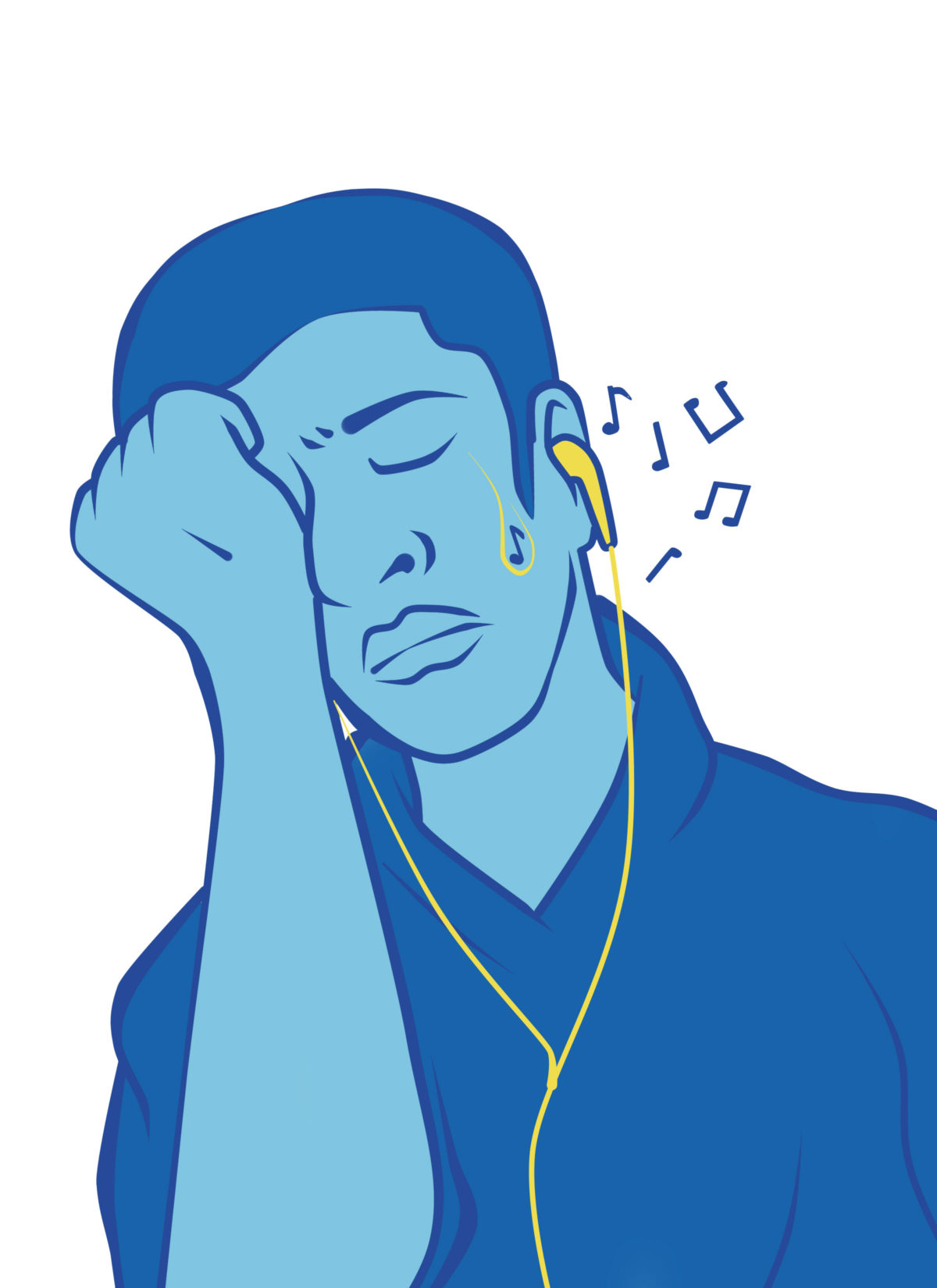
A study published in the journal Royal Society Open Science showed a significant decrease over the last five to ten years in the amount of happy or bright sounding songs topping the charts. Meanwhile, there was a significant increase in the number of songs that portray sad themes.
Much to the confusion of older generations, the surge of sad music in the pop charts reflected a cultural phenomenon among high school and college-aged people. The emergence of curated sad music playlists and “sad boi hours” posts on Snapchat stories commonly appeared on social media feeds.
Georgia State student Jace Mozeko spoke about his experience creating and listening to sad music playlists and claimed that it has been an effective tool in improving his mood.
“I would say it does help to process my own feelings,” Mozeko said. “You have to pick the right songs that provide relatability in feeling and in lyrics.”
Mozeko thinks that the effects of social media can be detrimental to mental health for the generation and that people in his age group seek something with which to identify.
“While preaching independence and originality, we are by far the most susceptible people to others’ thoughts and actions,” he said. “This lack of true originality and thought renders us a little lost and looking for something that speaks to us.”
Martin Norgaard is an associate professor of music education at Georgia State. His research focuses on the effects of music on cognition. While Norgaard admitted that he had not heard of the sad music trend, he did cite a 2016 study from Frontiers in Neuroscience as an explanation for how it could have positive effects on mood.
“It causes activation in the reward circuit that may actually be a pleasurable thing,” Norgaard said. “The article gives the reason that people empathize with the musicians or with the composer or with the singer of the music. This experience of empathy is what draws people to it.”
Norgaard noted the possibility of there being therapeutic effects from listening to sad music because of the listener’s ability to identify with the song and feel less alone. He also expressed his thoughts on why younger people are so drawn to sad themes.
“It seems like there is a higher level of anxiety in society,” Norgaard said. “I think that anxiety among high school and college students has been well-documented. There may be a link, but I can’t speak to that directly.”
Norgaard could not speak to the effects of listening to sad music on people with depression. But a study published in The Arts in Psychotherapy showed that it may have the potential to be harmful. Listening to sad music can add to ruminations on negative thoughts that affect people with depression.
Another study in the same journal showed that many people with depression are more drawn to sad music. Many subjects claimed that it helps them when, in reality, it did the opposite.
Being mindful of one’s needs can be especially important when it comes to consuming media. Staying informed and aware of these needs can help music fans make better choices for their personal mental health situation.
